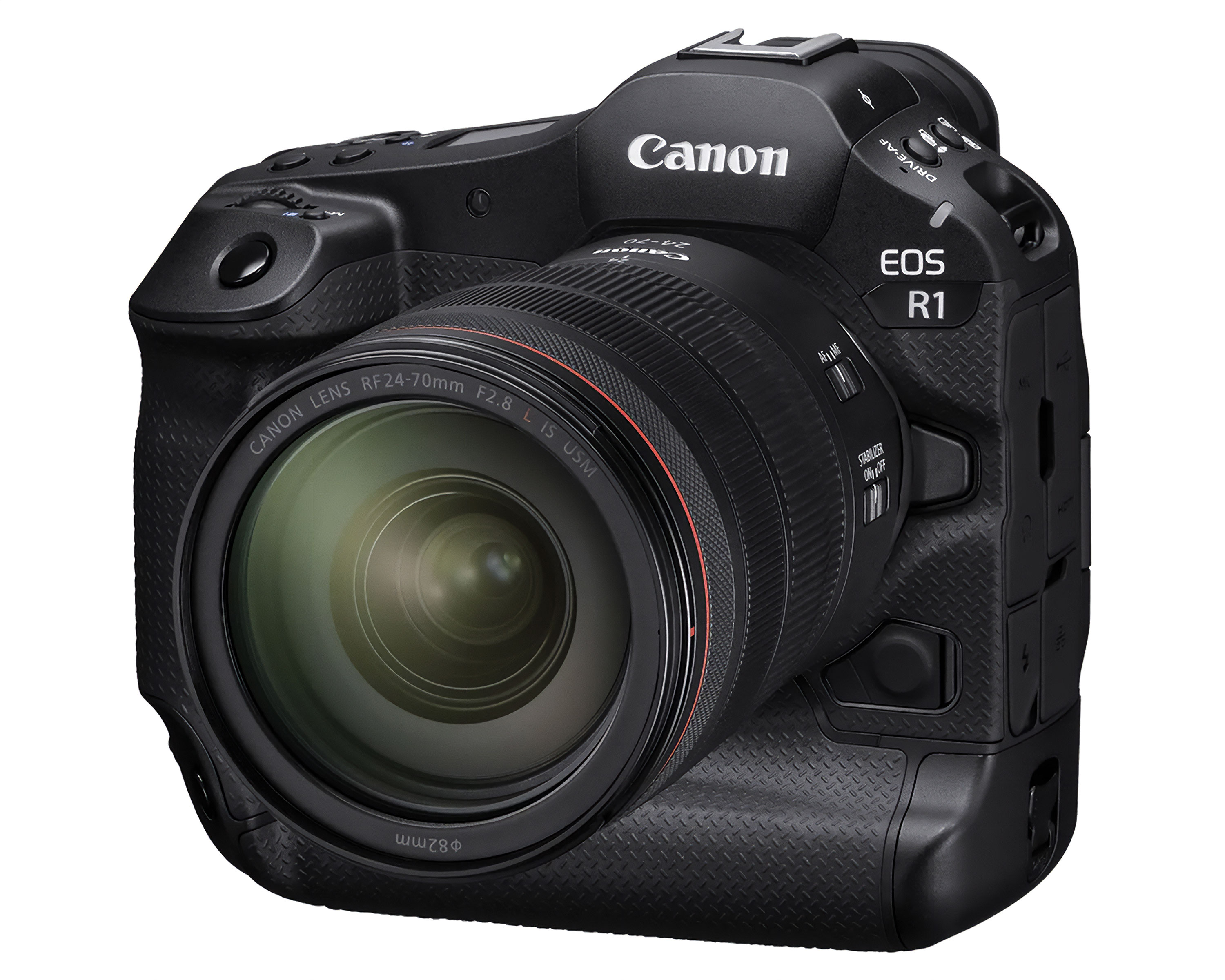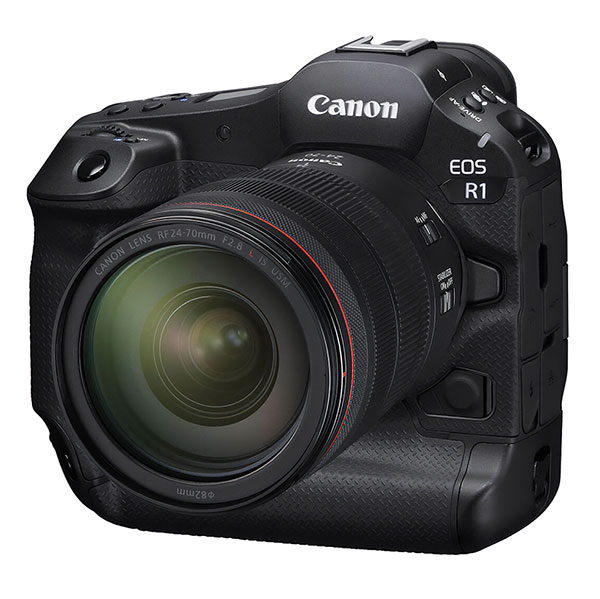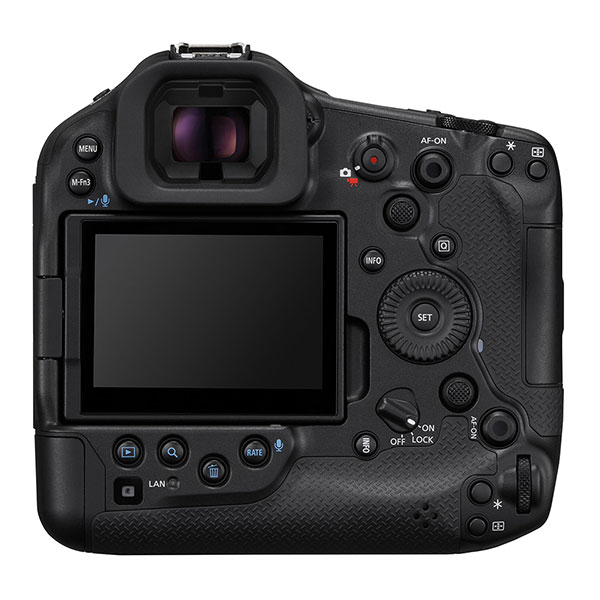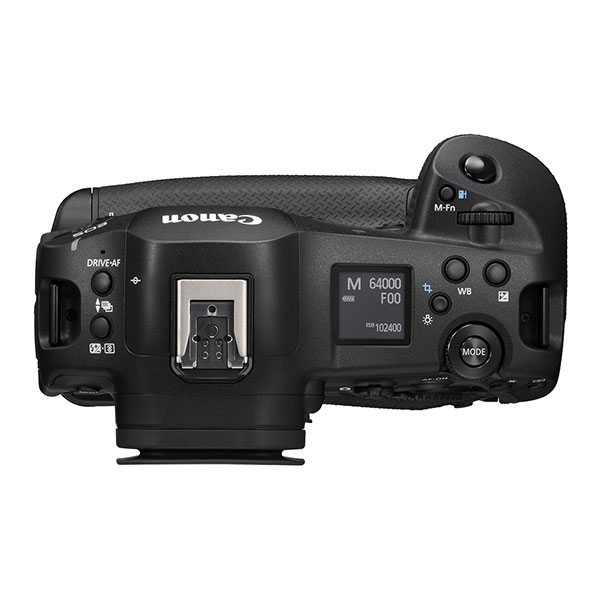| sent on June 19, 2025
Pros: A heartfelt thanks to Canon that continues to carry out the 24mpx sensor for its flagships always going in the direction of the best possible image quality and unparalleled in all light conditions, unlike the competition that has succumbed to the fashion of mpx, an extraordinary bait and switch. Guarantee to take home the shot in all situations. One battery lasts as long as six batteries in the R5ii/A1/Z8. The viewfinder is a panacea for the eyes and the mind. The 24mpx, so good that they are worth 34, offer unparalleled image quality while generating light files. JPEG ready in camera, you can often avoid shooting in RAW avoiding going crazy looking at them and processing them all. The autofocus is a guarantee, but I would stay away from those who call it an incredible beastly alien, and it doesn't seem to me that A1ii and A9iii do worse in terms of recognition and stickiness, on the contrary.. In the most difficult situations the classic central point is used, as with reflex cameras, there is no saint that holds.
Cons: Slow awakening ! Ergonomics and layout of the keys: too many keys, some in my opinion useless, and they are not all always arranged well. The grip is too "chubby" and shallow (the Z9 does much better and so does the R3). the responsiveness and sensitivity of the joystick and the shutter button can still be improved, although already excellent and improved compared to the R3. I expected something more from the JPEG in terms of color especially on gray days or in the morning with difficult light, in these situations the colors are a bit dull and dull. The R5ii has a little more oomph in the JPEGs. Reasoning in professional terms the cons could end here, while reasoning in amateur terms a giant con of the RF system continues to be the lens park, too exclusive and limited that provides a super expensive Pro line and a "cheap" line for amateurs and beginners with dark and plasticky stm and rubbish like the 200-800. A 600mm 6.3 has always been missing. Even in naturalistics, the awards are not impeccable, especially for mammals. Sony and OMSYSTEM do better for me. Those for birds and for vehicles are ok
Opinion: The Canon R1 is a precisely, "uniquely" professional medium, which, if used with L-series lenses independent of the brightness, allows you to bring home the work in all contexts and in all light conditions. It is a camera designed exclusively for the sports professional, for those who attend major world and social events, and for those who work in the journalistic field. Any other type of use is not recommended with the R1, not because it is not good, but because especially in naturalistic which is the field par excellence of amateurs, who delight, having a lot of free time available, and who want to spend dozens of hours a day in front of the PC to "manipulate" the RAW and to crop like desperate (for reasons that still escape me today) there are cheaper and more effective solutions. there is the R5II, there is the Z8/9, and there is above all the Sony A1, there is the OM1 there is the S1RII etc .. The R1, unlike all these above, offers a much higher image quality in dynamic and difficult situations, and throughout the range of its ISO sensitivity, but what matters most and what makes the difference (huge !!) is the fact of having all this quality ready in the JPEG. An immeasurable and priceless advantage for those who have to work, who do not need to archive universes of GB, to use 7 million of memories and to throw entire days, (months in the case of amateurs) in front of the PC to look at and arrange the files). With the R1 you shoot, download, send and publish everything in a few seconds, with the highest quality and maximum lightness / simplicity. As for image quality, the R1 has an advantage of more stops than the R6 and R5, and several stops over all the other flagship cameras of the competition, A9iii and A1/A1ii Z8/9 limited and neutered by all those mpx. The R1 then has a further ace up its sleeve, and that is the AI Denoise directly in the camera, which in the most "disgusting" situations when you go beyond the limit of common sense, saves your life and churns out in 10sec. a fantastic JPEG, sharp and clean and without artifacts and which remains very natural and truthful. Unlike the much acclaimed bigmpx that already at medium-low ISO are pitiful, especially in the JPEG, and force you to waste time and space in the processing of the RAW to get satisfactory results in terms of image quality and color. The other strong point of the R1 is its viewfinder, large, sharp, bright and above all natural, by far the best around... At least as long as there is light, when the light disappears, that is, practically in the dark, the viewfinder loses its magic and settles on a par with those of the other flagships. Regarding the autofocus I would avoid talking about miracles, "monster", "alien", "beast that finds the eye of a microscopic ghost hidden behind a bramble at night" .. the autofocus is certainly fantastic, but in practical use net of all the devilry and awards, it seems to me complementary to that of the other flagships Z9 A9iii A1ii. At the level of recognition of the subjects (small and distant) I do not see these celestial miracles that many talk about, on the contrary, if the subject is not distinguished on the frame, it seems to me that it is lost with a certain nonchalance, with ungulates if the background is disturbed or the subject from behind goes to "butterflies". And here we come to the point, to the optics! On the R1 only L-series lenses should be used and for naturalistic only super-telephoto lights that allow the frame to be filled. You have to use the 600 F4 with the TC and the 400 F2.8 with the TC, which means spending about 22k to which another 20k will be added to complete the kit. This advises against (for common sense) any amateur/naturalistic use, as other brands offer equally effective solutions and in my opinion also more suitable and at lower prices. |







![[editors pick]](shared_files/layout/ep_badge.jpg)

![[editors pick]](shared_files/layout/ep_badge.jpg)

![[editors pick]](shared_files/layout/ep_badge.jpg)


































 JuzaPhoto contains affiliate links from Amazon and Ebay and JuzaPhoto earn a commission in case of purchase through affiliate links.
JuzaPhoto contains affiliate links from Amazon and Ebay and JuzaPhoto earn a commission in case of purchase through affiliate links.